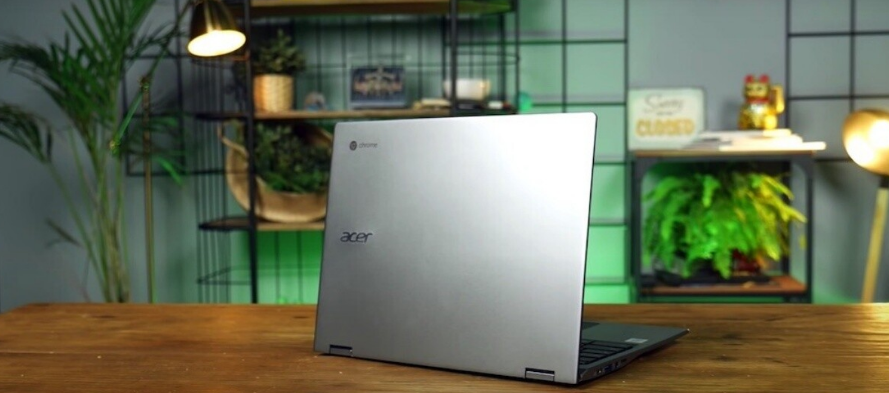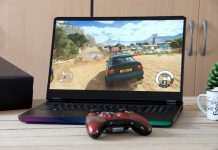
We are going to explain what exactly a Chromebook is, and what are the characteristics and evolution of these devices. It is a family of laptops that are based on the use of a Google operating system, and although focused on lower ranges they also have some high-end models.
We are going to start the article by explaining what Chrome OS is. Then, we will continue talking about what Chromebooks are to end by explaining how they have evolved together with their operating system. To give you an idea, the demand for Chromebooks grew 109% in 2020, and Chrome OS has become the second most used operating system in the world, surpassing Apple’s macOS and falling behind Windows.
What is Chrome OS?
To understand the raison d’être of Chromebooks, you first have to understand what Chrome OS is. It is an operating system created by Google and is different from Android. It is based on the Linux kernel and uses Chrome as its main user interface. This means that its appearance is practically identical to that of Chrome but with some additions such as a taskbar, a file explorer, and other elements present in any operating system.
The idea behind this operating system is that most of us use the computer to browse the Internet and that 90% or 95% of the time you will be in Chrome or another browser. Therefore, Chrome OS is an operating system born for these needs, for those who prefer cost and functionality to browse the Internet instead of a more complete and better-equipped laptop.
It was announced in mid-2009 and initially had the idea of being a cloud-based system and web application. This meant that, when you were connected to the Internet, you could do many things thanks to tools like Google Drive or the applications from the Chrome Web Store, but when you stopped having the Internet, its functions were greatly limited.
But little by little and despite how limited it was in its early years, over time Google has not given up on it and has been making it evolve. First, options began to be added to Google applications so that they could be used offline, something that also benefited users of the Chrome browser itself on other operating systems.
But the biggest evolution was coming later. The first big step was the announcement of support for running Android apps, and the Google Play Android app store was directly implemented to make the app installation experience as native as Android. Even so, it must be said that the arrival of Android to Chrome OS has been slow, and it has taken a few years to make everything work as it should.
And in mid-2018 it was announced that Google Chrome will also be able to use applications created for GNU/Linux systems. With this, the catalog of applications designed to work offline is multiplying, embracing the community of free developers, although it is also to be expected that it will take a few years for everything to be perfectly integrated. Here, you have to understand that there are different types of computers with Chrome OS, many of them with very limited hardware, and sometimes these compatibilities have not yet arrived.
Chrome OS is today a complete operating system. It has the basics, native applications, and compatibility with Android, which joins a media player, file manager, printer configuration, etc. Also, like the browser, Chrome OS has a free version called Chromium OS, which despite not having Google’s native technology serves as a way for the community of independent developers to help improve it.
What is a Chromebook
Chromebooks are laptops that use Google’s Chrome OS operating system. The first official prototype was announced at the end of 2010, and from 2011 the first commercial devices began to arrive, until Google itself launched its first device called the Chromebook Pixel in February 2013.
Just as manufacturers like Apple maintain control of hardware and software, since Macs are the only computers to officially come pre-installed with macOS, the difference is that Google allows other manufacturers to launch their Chromebooks as well, thus creating a broader ecosystem. Of the device.
Chromebooks were born to focus on the educational field, with devices with prices as low as their benefits. As we have told you before, the idea is still that Chromebooks are the alternative for those who use the laptop mainly for browsing and prefer a cheap computer with which to navigate quickly than spending twice as much on more capable laptops whose functions are hardly going to use.
Since then, manufacturers such as HP, Samsung, Acer, Asus, Sony, Dell, Lenovo, and Toshiba have been launching new Chromebook models over time. They have also launched other types of devices called Chromebox, which are computers in mini PC format but quite a minority. Come on, Chromeboxes are microPCs with Chrome OS, while laptops are directly called Chromebooks.
Google’s approach to Chrome OS has been much the same as it has been with Android. Let the manufacturers do it, but from time to time it launches its flagship. This is usually quite a bit more expensive than most Chromebooks, but just like the Nexus and Pixels on mobile, they serve as a showcase for what they’re capable of.
Chromebook evolution
Along with the evolution of Chrome OS, Chromebooks have also been getting older and changing their approach. What started as simple netbooks for 200 or 300 euros are now much more capable computers. Even high-end laptops have been released to match the performance of Macbooks and Windows laptops.
One of the last attempts to assault this high-end was the 2017 Google Pixelbook, which came equipped with an Intel Core i5 and Core i7 processor, up to 16 GB of RAM, and 128, 256, and 512 GB SSD drives. Another assault came in mid-2018, now in the same format as Microsoft’s Surface, with a convertible called the Pixel Slate.
From then on, a rather curious thing happened. Suddenly, all the excitement around Chromebooks seemed to die down, and even Google’s moves pointed to a loss of interest in creating its Chromebooks after the Pixelbooks and Pixel Slates didn’t sell as much as they intended. However, other manufacturers continued to bet on the operating system.
But in 2020 the COVID-19 crisis arrived, with massive lockdowns all over the world. Teleworking increased dramatically, and many schools began to adopt temporary models of distance or mixed education along with face-to-face. If only there was one kind of cheap laptop that would help with those essentially browser-based tasks … And there was, leading to a 109% increase in demand for Chromebooks.
And now that we are in 2021, there is a great paradox. Google is still not betting on Chromebooks, and the Spanish Google Store does not have any. However, if you look for them in stores like El Corte Inglés, Amazon, Fnac, Media Markt, or components, you will see several models available like never before. And there are all kinds of models, from those that are worth less than 300 euros to those that reach 700.
In addition to this, we can see that the evolution of the devices continues to be in good health, and recently manufacturers such as Samsung have introduced new Chromebook models with technologies such as QLED screens or WiFi 6. They have weak processors, but these devices don’t need much more, and their impact is leading companies like Microsoft to decide to bring their applications to Chromebooks.
Chromebook FAQ
1. How to screenshot on Chromebook?
The shortcut to take screenshots is to press Ctrl + Show Windows at the same time. The Show Windows at once button is the one on the row of keys above the numbers, whereas on Windows keyboards the F5 button would be.
2. What is the average price of the Chromebook?
The average price of Chromebooks is usually around between 200 and 400 euros depending on the model. Some are more expensive and with better specifications, but they generally seek to be cheap laptops designed for basic functions and Internet browsing.
3. What types of Chromebooks are there?
Chromebooks can be like normal laptops, or with screens that open 360 degrees to become a tablet. They also come with different screen sizes ranging from 10.1 to 15.6 inches.

Sharlene Meriel is an avid gamer with a knack for technology. He has been writing about the latest technologies for the past 5 years. His contribution in technology journalism has been noteworthy. He is also a day trader with interest in the Forex market.











